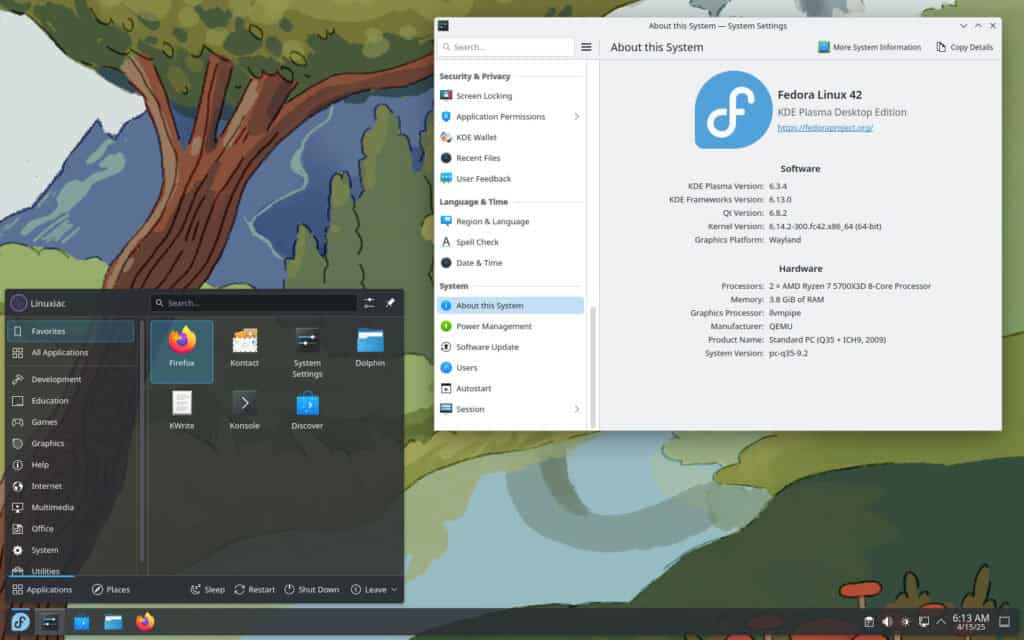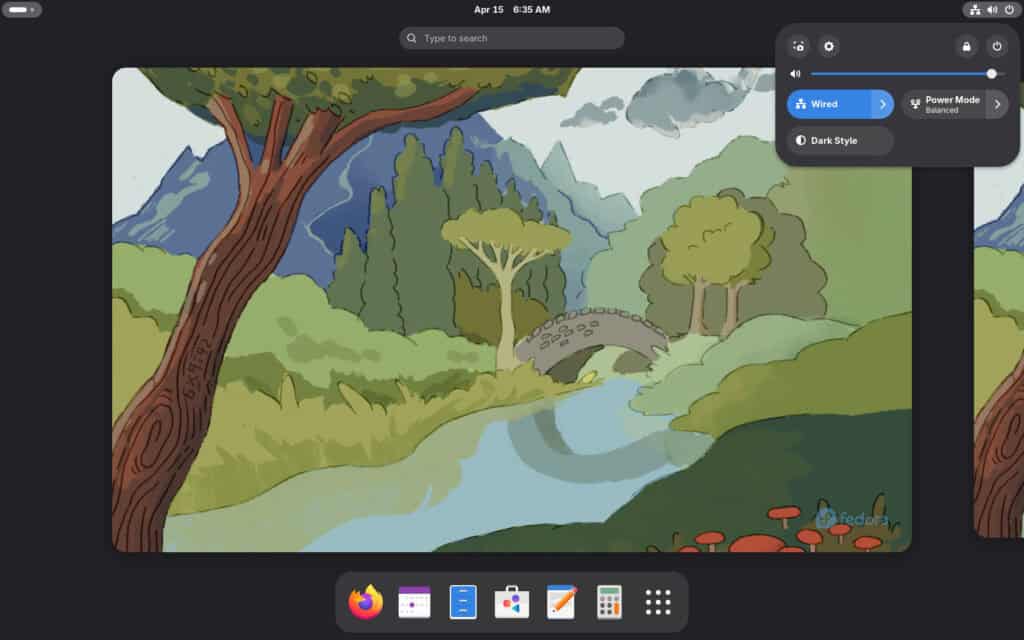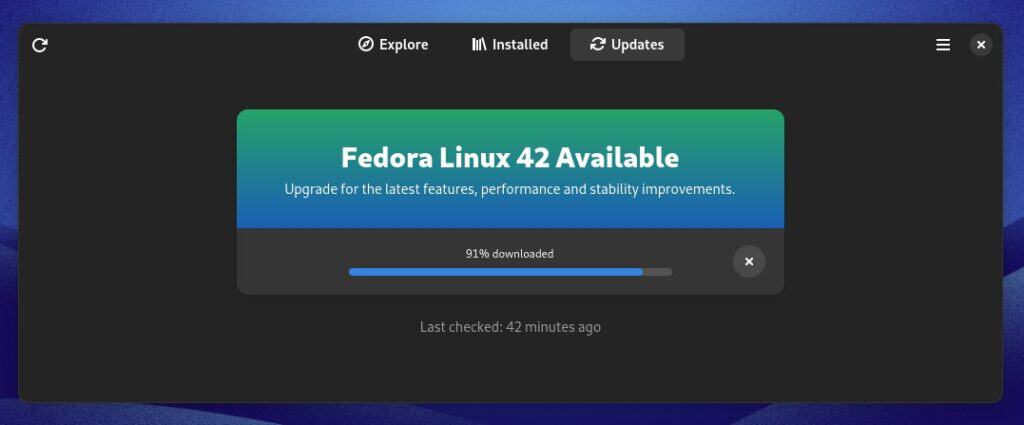Another six-month cycle has passed, and the highly anticipated Fedora 42 release is finally here, now available for download, powered by the latest and greatest Linux kernel 6.14.
The first thing that will immediately impress you is that Anaconda’s installer has undergone significant changes. Most prominent is a newly introduced Web UI, which is now the default for Fedora Workstation installations. This interface includes an installation progress indicator, built-in help, a configuration review, and a Wizard function that lets users skip unnecessary steps.
Also, the web-based partitioning feature adds a guided partitioning function—giving users the option to specify their installation goal and customize partitioning further.
Complementing this is a convenient “Reinstall Fedora” option when a system needs a swift reset. Plus, for dual-boot enthusiasts, the new partitioning approach requires only the creation of free space, streamlining setup without demanding in-depth knowledge of other operating systems.
The other big news with this release is that KDE Plasma Desktop is being promoted to a full-fledged edition, standing shoulder-to-shoulder with the other flagship GNOME variant. The version you get with Fedora 42 is the latest one, Plasma 6.3.4, accompanied by Frameworks 6.13 and the KDE Gear 24.12.3 apps collection.

Support for Power Systems (ppc64le) has been introduced as part of this elevation. Enthusiasts can expect the same standard of excellence that KDE Plasma has delivered in previous Fedora iterations. Even better, a comprehensive KDE stack, which includes KDE PIM, is now available on Power.
In addition, installable live images support OpenPOWER hardware like the Talos Workstation from Raptor Systems, expanding compatibility across diverse platforms.
The brand-new Fedora COSMIC spin is also making a noteworthy debut in Fedora Linux 42. System76’s Rust-based desktop (currently in Alpha 6 phase) comes loaded with unique features such as hybrid per-workspace window and tiling management, window stacks with tab switching, and extensive customization support for both GTK and (in time) Qt.
Quite expected, the other Fedora workstation edition, GNOME, features the latest and most up-to-date release of the desktop environment—version 48. The changes are many, with the most significant being:
- Notification Stacking: App notifications are now grouped for easier navigation.
- Dynamic Triple Buffering: Smoother animations and reduced frame skips via Mutter improvements.
- Performance Gains: Reduced CPU/memory usage in the JavaScript engine, faster folder loading and scrolling in Files, and optimized GTK performance for app interfaces.
- HDR Support: Initial system-level HDR output for supported displays.
- Enhanced Image Viewer: Basic editing tools (crop, rotate, flip), new zoom controls, experimental RAW and XMP metadata support.
- New Default Fonts: Adwaita Sans and Adwaita Mono for better rendering and language coverage.
- Battery Health Preservation: Option to cap charge at 80% for longevity.

Beyond these highlights, Fedora 42 ships with updated developer-focused tools and libraries. It features the latest upstream release of “python-setuptools,” an essential library simplifying packaging for Python-based projects.
Furthermore, the DNF5 package manager introduced in Fedora 41 receives an important upgrade that automatically manages repository keys by removing expired and obsolete ones. This release also includes the newest version of Ruby—3.4.
Fedora 42 also provides a streamlined way to explore Linux on Windows systems via the Windows Subsystem for Linux (WSL). A specialized Fedora Linux image and thorough documentation invite Windows users to dip their toes into the Fedora waters, aiming at those intrigued by Linux but hesitant to commit to an installation on their primary machine.
Lastly, users can look forward to a smooth transition to SDL3 and Wayland-by-default for SDL apps, ensuring more modern graphics handling out of the box.
For more detailed information about all novelties in Fedora 42, visit the release announcement. The ISO installation images are available from the project website’s download section.
How to Upgrade to Fedora 42
If you’re running Fedora 41 and want to upgrade but are still trying to figure out how to do it, don’t worry. We’ve got you covered. You can easily do it by following our comprehensive “How to Upgrade to Fedora 42 from Fedora 41” step-by-step guide for hassle-free execution.


Wondering why Fedora 42 was released without support for some of the major Thinkpad models like T480s finger print and IR scanner sensors, it leaves my sensors redundant yet so good to be used in public areas during Hackathons and meet-ups….Good Distro though
Always good, fedora is one of distris’s usually works very good with all of DE or windows managers, i tested all so many DE on my fedora, and it works excellent.😀
“Enthusiasts can expect the same standard of excellence that KDE Plasma has delivered in previous Fedora iterations.“ – I better NOT, It is good to know that KDE is now official edition (may try it again) but before it was available only as a Spin and I tried at least a couple of times – it was terrible – it glitched a lot, in comparison with openSUSE with “native KDE support” it was unusable/unstable.
I have been using it since the beta started and the performance boosts are obvious.